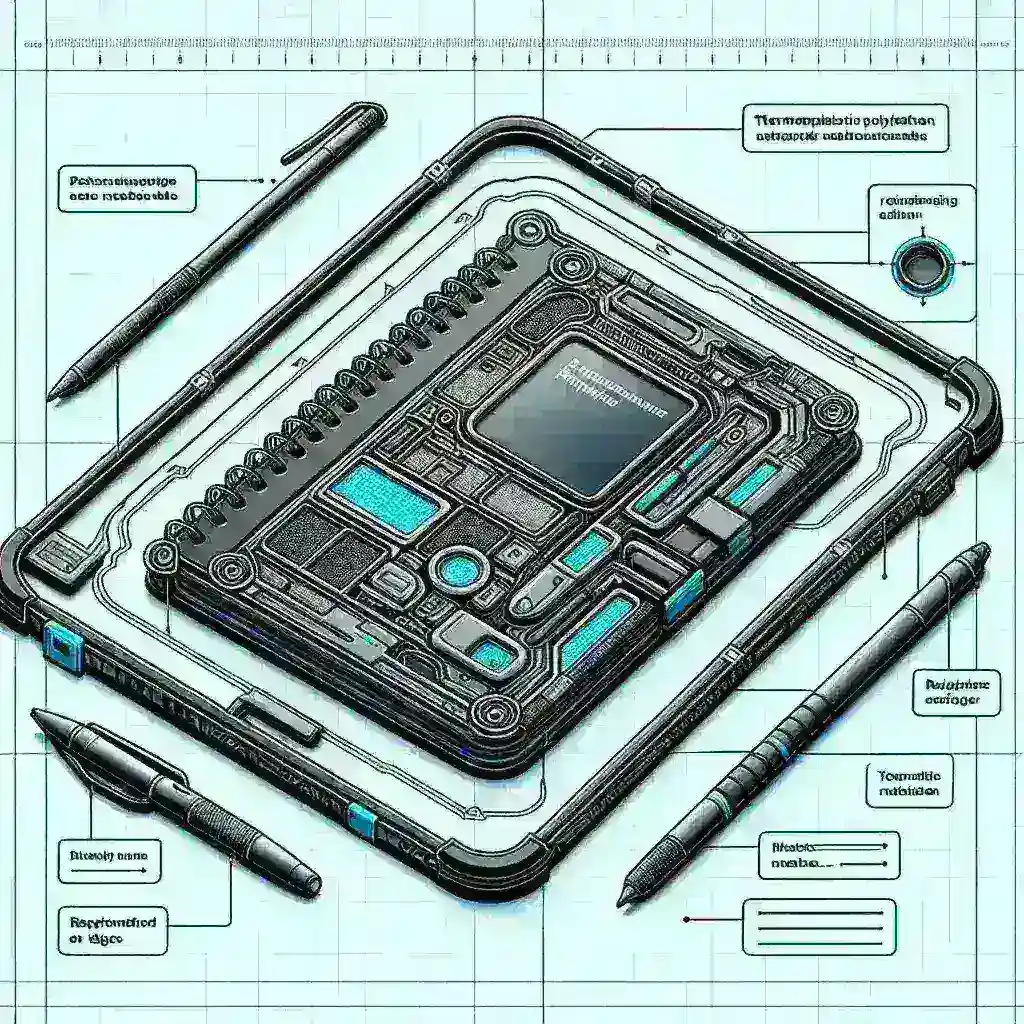
How TPU Outer Edges in Notebook Design Improve Durability
Introduction
In today’s fast-paced world, where technology is constantly evolving, the durability of our devices is paramount. Notebooks, used for both personal and professional purposes, are particularly susceptible to wear and tear. To address these challenges, manufacturers are increasingly incorporating innovative materials into their designs. One such material is Thermoplastic Polyurethane (TPU), which has gained prominence for its remarkable properties. This article delves into how TPU outer edges in notebook design significantly improve durability, ultimately enhancing user experience.
What is TPU?
Thermoplastic Polyurethane (TPU) is a versatile material known for its elasticity, transparency, and resistance to oil, grease, and abrasion. It is a type of plastic that combines the advantages of rubber and plastic, making it ideal for applications requiring flexibility and durability. The incorporation of TPU in notebook design offers numerous advantages, particularly in enhancing the longevity of the product.
The Role of TPU in Notebook Design
1. Impact Resistance
One of the most significant benefits of using TPU in notebook design is its exceptional impact resistance. Notebooks are often subjected to drops, bumps, and other forms of physical stress. TPU outer edges act as a protective barrier, absorbing shock and minimizing damage to internal components. This feature is particularly critical for students and professionals who frequently transport their devices.
2. Scratch and Abrasion Resistance
Notebooks are prone to scratches and abrasions, which can mar their appearance and compromise functionality. TPU’s surface properties provide a protective shield that resists scratches, ensuring that the device remains aesthetically pleasing over time. This durability not only enhances the notebook’s lifespan but also maintains its resale value.
3. Flexibility and Adaptability
TPU is renowned for its flexibility, allowing manufacturers to create edges that can withstand bending and twisting without breaking. This adaptability makes TPU an excellent choice for notebooks that need to cater to a variety of user needs, from lightweight portability to robust performance.
4. Environmental Resistance
In addition to its mechanical properties, TPU is resistant to environmental factors such as UV radiation, moisture, and temperature fluctuations. This resistance is crucial for notebooks that may be used in various settings, be it indoors or outdoors. By incorporating TPU, manufacturers can ensure that their devices remain functional and visually appealing, regardless of the conditions they face.
Comparative Analysis: TPU vs. Traditional Materials
To better understand the advantages of TPU, it’s essential to compare it with traditional materials used in notebook design, such as polycarbonate and rubber. While polycarbonate offers durability, it often lacks the flexibility and shock absorption properties of TPU. On the other hand, rubber provides excellent grip and cushioning but may not withstand environmental stressors as effectively as TPU.
Strengths of TPU
- Superior shock absorption: TPU effectively minimizes internal damage from drops.
- Enhanced aesthetic appeal: TPU allows for sleek designs without compromising durability.
- Long-term cost efficiency: Investing in a notebook with TPU edges can lead to lower replacement costs.
Weaknesses of Traditional Materials
- Limited impact resistance: Traditional materials may crack or break upon impact.
- Less attractive design options: Traditional materials often lack the sleekness that TPU can provide.
- Higher replacement frequency: Devices made with traditional materials may require replacements more often.
Step-by-Step Guide: How TPU Edges are Integrated into Notebook Design
Step 1: Material Selection
The process begins with selecting high-quality TPU that meets the specific requirements for flexibility, durability, and environmental resistance.
Step 2: Molding and Shaping
TPU is then molded into the desired shape, creating outer edges that will fit seamlessly onto the notebook chassis.
Step 3: Testing and Quality Assurance
Before mass production, prototypes undergo rigorous testing to ensure they meet durability standards.
Step 4: Assembly
Once the TPU edges pass quality assurance checks, they are assembled onto the notebook, ensuring a snug fit.
Step 5: Final Inspection
Each notebook undergoes a final inspection to guarantee that all components, including the TPU edges, meet quality standards.
Real-World Examples
Many leading notebook brands have adopted TPU in their designs, showcasing the effectiveness of this material. For instance, several high-end laptops feature TPU outer edges that not only enhance durability but also contribute to a modern aesthetic appeal. Customers often report higher satisfaction rates and lower incidence of damage when using these products.
Future Trends in Notebook Design
As technology continues to evolve, the trend of incorporating TPU and other advanced materials in notebook design is likely to grow. Manufacturers may explore bioplastics or other eco-friendly alternatives that maintain the durability of TPU while also reducing environmental impact. Additionally, integration with smart technology could lead to notebooks that not only last longer but also enhance user functionality and experience.
Conclusion
In summary, the incorporation of TPU outer edges in notebook design plays a crucial role in enhancing durability. With its remarkable properties, TPU offers protection against impacts, scratches, and environmental factors, making it an invaluable material in the modern technological landscape. As users increasingly prioritize longevity and functionality in their devices, the adoption of TPU may continue to rise, shaping the future of notebook design.
